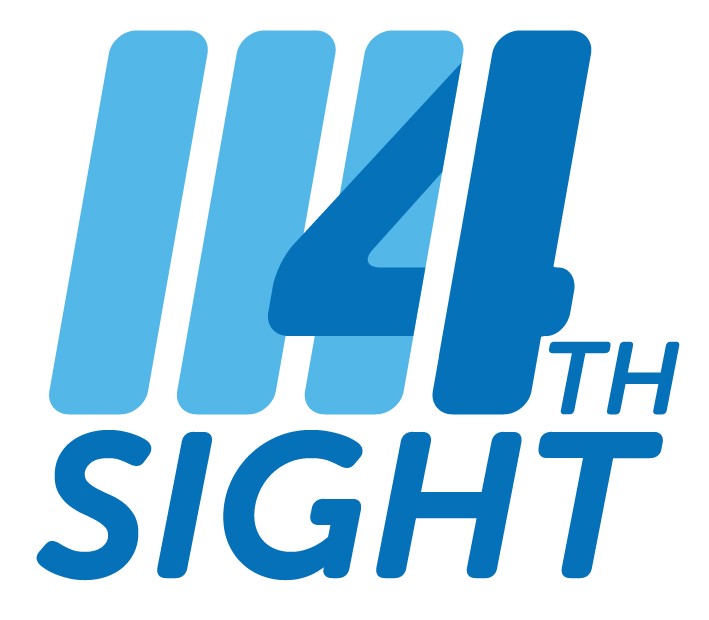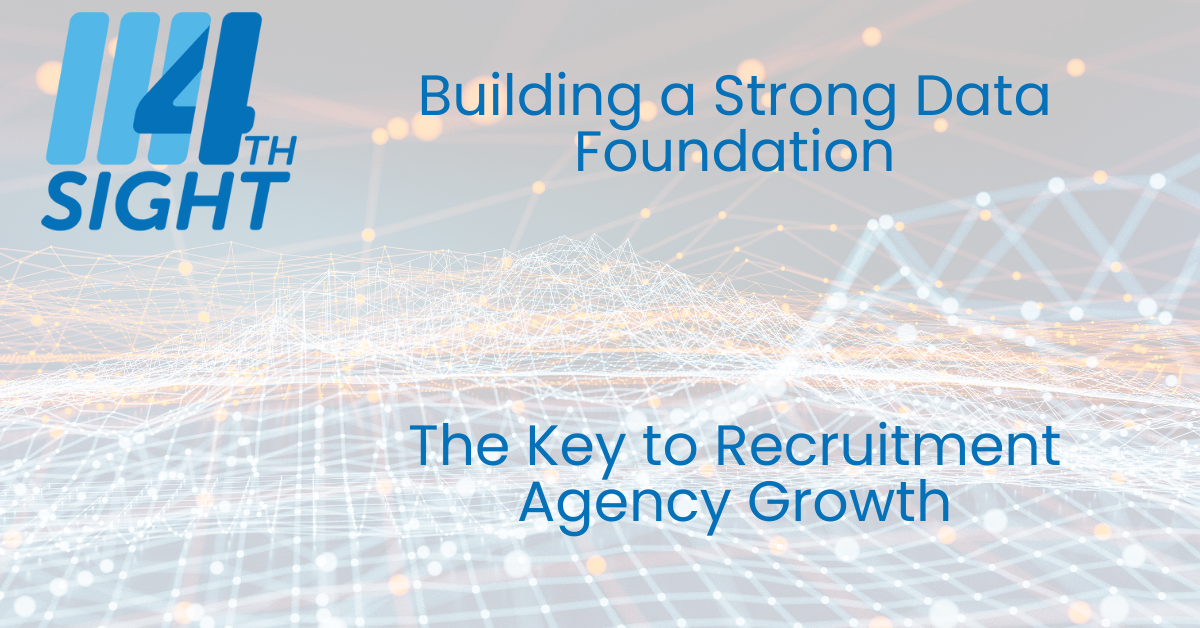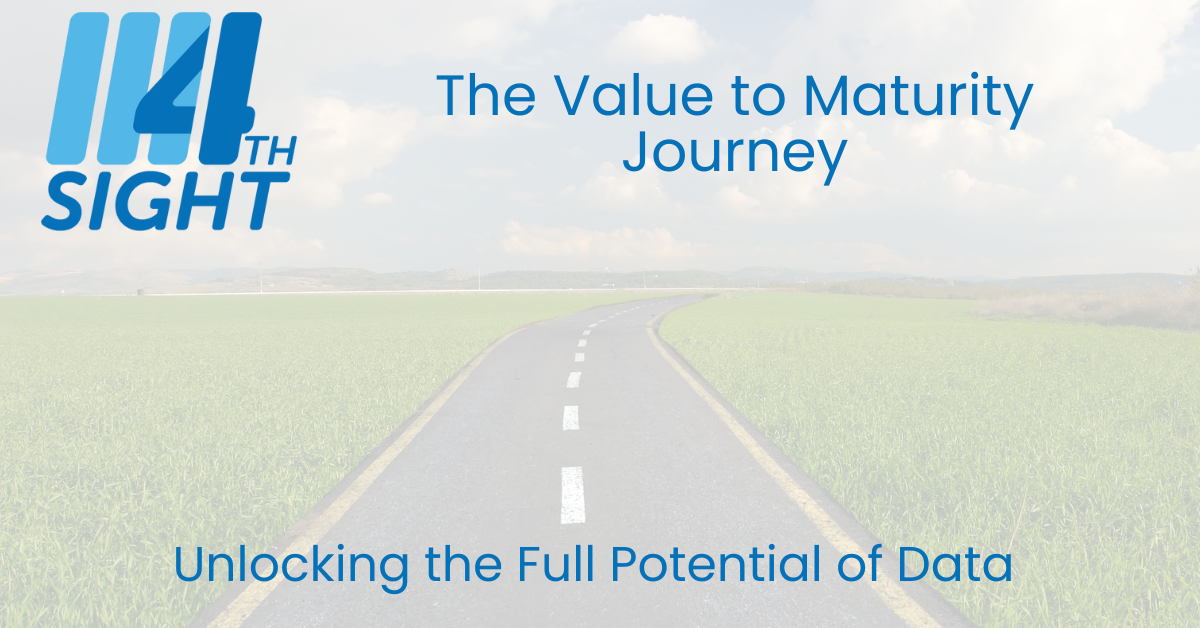Why Data Matters in Recruitment
In today’s fast-paced recruitment landscape, agencies face an ever-growing need to harness the power of data for strategic decision-making and operational efficiency. However, the focus often centres on data-driven recruitment strategies—using analytics primarily to enhance candidate sourcing and placement. While this approach has its merits, it overlooks a crucial element: the need for a comprehensive data foundation that integrates insights from all business functions. Recruitment agencies collect vast amounts of data, but without a solid foundation, that data can be siloed, inconsistent and underutilised.
At 4thSight, we recognize that true growth for recruitment agencies comes from unifying data across various systems—CRM, finance, and timesheets—into a single, accessible platform. This holistic view empowers agencies to not only track recruitment metrics but also to enhance overall operational performance and profitability.
By shifting the narrative from merely being data-driven in recruitment to building a strong data foundation, agencies can transform their operations, drive business growth, and ultimately deliver a more personalised experience to clients and candidates alike. In this article, we will explore the key components of a robust data foundation, the benefits it offers, and actionable steps for recruitment agencies to implement this critical framework.
What is a Data Foundation?
- Unified Data: A data foundation starts with unifying data from different systems (CRM, finance, timesheet) into one centralised repository. This ensures data consistency, completeness, and ease of access across departments.
- • Single Source of Truth: Agencies often work with disparate systems, leading to fragmented data. A data foundation creates a “single source of truth,” where all critical information, such as candidate details, financial performance, and employee hours, can be accessed in one place.
- Automation of Data Processes: A proper data foundation supports automation, removing the need for manual data handling, thus reducing errors and time spent on redundant tasks (e.g., month-end reporting or commission calculations).
Key Components of a Data Foundation
1. Data Integration: Integration of data across systems (CRM, timesheets, and finance) using tools like ETL (Extract, Transform, Load) processes or APIs. This eliminates data silos and ensures a holistic view.
2. Data Quality & Governance: Ensure the data is clean, standardised, and governed with clear rules on how it’s accessed and used. Recruitment agencies can use tools to maintain data quality, ensure regulatory compliance, and maintain candidate privacy.
3. Scalability: A solid data foundation must be scalable to handle growing amounts of data as the business expands. Cloud-based solutions (e.g., Azure, AWS) offer scalability and flexibility for agencies of all sizes.
4. Data Analytics and Insights: A strong data foundation empowers agencies to leverage advanced analytics and reporting tools to gain insights into candidate performance, placement success, market trends, and internal efficiency metrics.
Benefits for Recruitment Agencies
- Improved Decision-Making: With unified data, agencies can make quicker, more informed decisions, such as identifying the best-performing consultants or recognising hiring trends.
- Operational Efficiency: Automating workflows like data entry, reporting, and forecasting saves time and reduces human error, freeing up recruiters to focus on high-value activities.
- Enhanced Candidate and Client Relationships: With a single view of each candidate and client across systems, agencies can offer more personalised experiences and stronger relationships.
Steps to Build a Data Foundation
1. Assess Current Systems: Understand the data sources (e.g., CRM, finance, timesheets) and how they currently interact. Identify pain points and areas of inefficiency.
2. Choose the Right Tools: Leverage data integration tools, BI platforms, and data warehouses that fit the size and needs of your agency.
3. Data Governance Framework: Establish rules around data access, privacy, and quality control to ensure compliance and reliability.
4. Train Your Team: Ensure recruiters and back-office staff are trained on the new systems and processes, so they can make the most of the data foundation.
A data foundation is the backbone of any modern recruitment agency’s strategy. By integrating data from key systems, improving data quality, and enabling analytics, agencies can significantly boost their efficiency, make better decisions, and stay competitive in the marketplace.
At 4thSight, we believe in the power of a unified data foundation. Unlike typical data-driven recruitment tools focused solely on candidate metrics, our platform integrates CRM, finance, and timesheet data to provide a holistic view of your agency’s performance.
Discover how 4thSight can help you build a strong data foundation that drives your recruitment agency’s growth. Contact us today for a demo!







